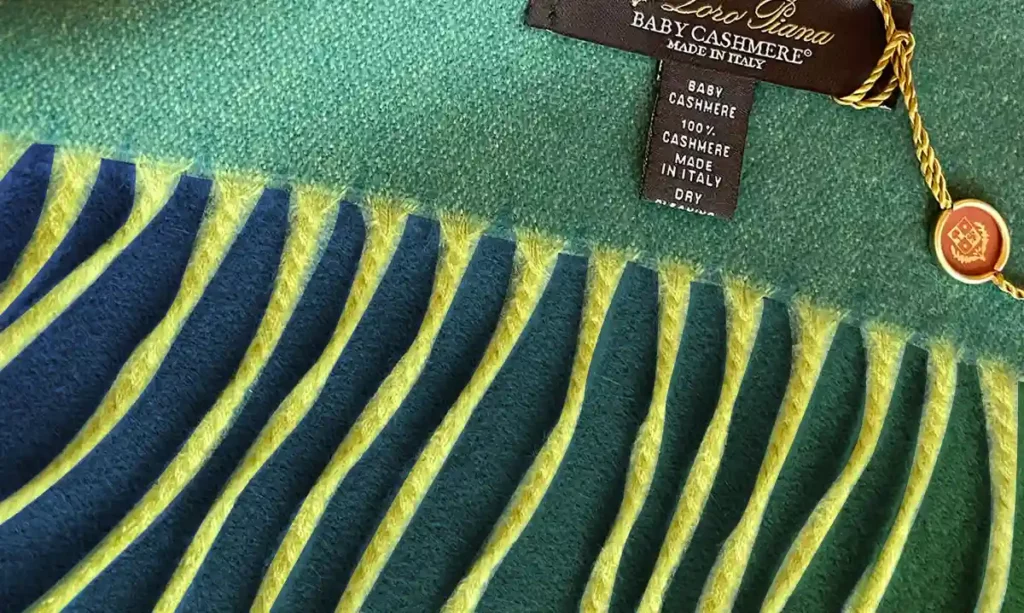The fashion industry thrives as a significant player within the global marketplace. Beyond its economic impact, it serves as a dynamic platform for cultural expression across the globe.
This sector caters to a diverse range of consumer needs and preferences. It encompasses the high-end, exclusive realm of haute couture, the mass accessibility of ready-to-wear collections, and even fast fashion models.
Furthermore, it reflects the evolving trends of sustainable fashion and the fast-paced nature of fast fashion.
From Haute Couture to Sustainable Fashion: A Spectrum of Consumer Demands

Within this comprehensive fashion landscape lies a spectrum of consumers, each seeking distinct value propositions depending on their needs, consumer expectations, and trends. Haute couture, renowned for its bespoke luxury and meticulous craftsmanship, caters to a discerning, elite clientele.
In contrast, ready-to-wear offers the convenience of off-the-rack garments, appealing to the mainstream market with its balance of style and affordability.
Sustainable fashion has emerged as a conscientious choice, emphasizing ethical production practices and eco-friendly materials. On the other hand, fast fashion caters to the desire for trendy clothing that is quickly available.
Enhancing Supply Chain Efficiency
Each fashion industry segment relies on a complex network of suppliers and distributors. Businesses in this industry often have multifaceted roles, including supplying raw materials and components and producing finished garments. Another challenge in this industry is managing payment methods.
This complex structure underscores the critical importance of efficient supply chain management, particularly concerning financial transactions. It often involves several currencies and international transactions, leading to challenges such as:
- Inefficient payment methods: Traditional methods can be slow, expensive, and lack transparency.
- Fluctuating rates: Currency movements can impact profit margins if not managed effectively.
- Diverse banking regulations: Different countries have varying regulations that can complicate cross-border payments.
Understanding the Complexity of Fashion Supply Chains

The fashion industry thrives on intricate supply chains, demanding meticulous planning and execution. Mastering supply chain management isn’t just beneficial for fashion businesses; it’s essential for this industry’s success.
For small and medium-sized fashion businesses, international payments transcend mere transactions. They represent a gateway to a global market of fabrics and materials that can define a brand’s identity, making this complex value chain work properly.
The ability to transfer money internationally efficiently and cost-effectively allows access to limited-edition fabrics and specialty materials that elevate product offerings and create a competitive edge.
Conversely, production cycles must operate with clockwork precision for large fashion factories, where volume and speed are paramount.
Even a single disruption in the supply chain can trigger a domino effect of delays, jeopardizing entire collections, seasonal launches, and complete sales cycles.
Recognizing the critical role of international commerce, financial institutions have adapted by offering sophisticated banking solutions to streamline cross-border transactions.
In the globalized fashion landscape, businesses require more than a local presence; they need a global reach to cater to customer demand worldwide.

International payments have become a crucial lifeline, granting access to high-quality materials, potentially limited editions, or those sourced from niche markets.
Strategic Imperatives for Payment Methods in Fashion
The fashion industry thrives on intricate supply chains that often extend across borders. Efficient international payment methods become strategic tools for businesses of all sizes.
In bespoke tailoring and high-end fashion, where acquiring unique materials is crucial, timely and efficient payment methods, particularly for cross-border transactions, can determine a business’s success.
The ability to secure these materials promptly can be the difference between creating an iconic piece and missing out on a fleeting design opportunity.

The Impact on Production and Sales Cycles
Similarly, for fashion businesses focused on mass production, efficient payment methods ensure smooth operations throughout the supply chain. Every payment delay due to inefficient systems can translate into lost production hours, missed sales seasons, and, ultimately, lost revenue.
This is true for businesses of all sizes within this industry, where maintaining the ability to meet customer demand, deliver high-quality standards throughout the production process, and improve profitability is essential.
Streamlining Operations with Global Payments
As mentioned, fashion supply chains often span different countries, each presenting rates and regulatory requirements.

Leveraging transactions in one currency while benefiting from favorable rates can significantly impact profitability. For this reason, multi-currency payment methods and solutions help reduce costs and improve efficiency in cross-border transactions, placing the necessary resources where they need to be and mitigating costs while receiving or sending money.
Optimizing Costs and Profitability
Beyond simply facilitating cross-border transactions, sophisticated global payment solutions offer the potential to optimize business costs and profitability. The ability to conduct transactions in a single, stable currency can simplify financial management and mitigate the risks associated with fluctuating rates.
Example:
Imagine a US fashion brand sourcing a unique fabric from an Italian supplier. By leveraging a global payment solution that allows transactions in USD, the US brand can avoid the complexities of managing fluctuating Euro exchange rates and potential currency conversion fees.
Leveraging Favorable Rates
Sophisticated international payment solutions can provide real-time foreign exchange rate information, allowing businesses to identify and capitalize on favorable exchange rates.
For instance, a UK fashion retailer may want to purchase many garments from a Vietnamese manufacturer. By utilizing a payment platform that offers transparent rates like Bancoli, the UK retailer can monitor currency fluctuations and choose the most opportune moment to execute the transaction, potentially saving a significant amount on the overall cost of the goods.
Design and Development
The process begins with the creative phase, where designers conceptualize and sketch new styles based on market trends and consumer preferences. These design concepts then move into the development stage, where patterns are created, fabrics are selected, and prototypes are produced.
At the design and development stage, you develop a frictionless product lifecycle management (PLM) process, as without it, your entire manufacturing process may fall way below your expectations. Using the right PLM solution enables you to plan your process from start to finish efficiently.
Production Management in the Fashion Supply Chain: Balancing Efficiency and Agility
Efficient production is vital for fashion brands to succeed, but it must also be adaptable to keep pace with trends. Here’s how fashion companies can achieve this balance. Strategic sourcing and production planning ensure a steady flow of materials and avoid costly stock issues.
Lean manufacturing focuses on minimizing waste and streamlining processes, leading to efficiency and cost savings.
Finally, maintaining consistent quality through robust quality control measures protects brand reputation and customer satisfaction.
By effectively implementing these strategies, fashion companies can create a production system that efficiently delivers high-quality products while staying responsive to the fashion world’s ever-changing demands.
However, unexpected disruptions can still occur. Fashion brands should prioritize enhancing risk management and planning to further solidify their production strategy. This involves conducting comprehensive risk assessments to identify potential vulnerabilities throughout the supply chain, from supplier reliability to geopolitical instability.
Developing contingency plans for various disruption scenarios, such as securing alternative suppliers or transportation routes, allows for a more agile response to unforeseen challenges.
Global Operations and Competitive Currency Management

Fashion supply chains thrive on a complex web, with operations often traversing different countries. Each nation within this network presents a unique set of regulatory requirements and exchange rates that businesses must navigate effectively to deliver finished products to their customer base.
Companies must access diverse, flexible payment options to remain competitive in this globalized environment.
These options are crucial for facilitating the efficient movement of funds across borders, ensuring timely payments to international suppliers, and fostering the smooth operation of the entire supply chain.
Beyond the ability to conduct cross-border transactions, sophisticated global payment solutions can significantly enhance a company’s financial standing.
The strategic use of major stable currencies like USD or EUR for transactions can streamline financial management and mitigate the risks associated with fluctuating exchange rates between different currencies. This can simplify bookkeeping and protect profit margins from unexpected currency movements. Furthermore, businesses can gain a significant competitive edge by leveraging favorable rates.
Embracing New Technologies for Production
Modern supply chain models have significantly transformed by embracing new technologies and methodologies to streamline operations and production facilities.

Digital technologies like artificial intelligence enhance various aspects such as:
- Improved Inventory Management: AI can analyze sales data and predict future trends, allowing for more accurate forecasting of raw material needs and finished product inventory levels. This reduces the risk of stockouts or excess inventory, optimizing resource allocation and production planning.
- Enhanced Quality Control: AI-powered systems can analyze product images and identify potential quality issues during manufacturing, leading to earlier detection and fewer defects. This translates to higher product quality and a better overall experience for consumers.
- Streamlined Communication and Collaboration: Digital platforms can facilitate smoother communication and collaboration with global suppliers. This can involve real-time order tracking, sharing of design specifications, and efficient exchange of information related to raw materials and manufacturing processes.
By adopting these technologies, fashion businesses can gain greater control over their global supply chains, leading to increased efficiency, improved product quality, and a more robust foundation for success in global commerce.
Demand for Transparency and Accountability

The globalized nature of the fashion industry has led to demands to increase transparency and accountability throughout the supply chain. This scrutiny extends beyond the final product and encompasses the ethical sourcing of materials, the environmental impact of production processes, and even financial operations for fully accountable value chains.
End consumers are increasingly interested in understanding the social and ecological footprint of the finished product they purchase.
Many fashion businesses actively generate impact reports detailing their environmental and ethical practices to address these evolving consumer demands. These provide consumers with valuable information about a company’s commitment to sustainability and responsible sourcing.
Beyond social and environmental impact reports, another layer of transparency emerges through Know Your Vendor (KYV) verifications. KYV verification processes provide valuable insights into a company’s supply chain partners, allowing fashion businesses to mitigate potential financial risks associated with fraud or instability within their supplier network.
By implementing these practices along various processes, fashion businesses can demonstrate their commitment to responsible sourcing and ethical production, fostering trust and loyalty with socially conscious consumers.
Cash Flow: Ensuring Timely Material Delivery and Production Schedules

Fashion businesses aiming for international reach face a cash flow hurdle. It’s not just about having money; it’s about having it in the right place and currency.
Maintaining Momentum in a Competitive Marketplace
Fashion companies must manage international money transfers precisely to sustain their market position despite fluctuating exchange rates and diverse banking regulations. In this context, a multi-currency solution such as Bancoli’s Global Business Account becomes crucial—not merely beneficial but a foundational element of financial operations.
This account makes cross-border payments flexible, protects against currency swings, and keeps transactions fast and affordable. It works across the whole supply chain, from buying materials to production and distribution, ensuring smooth payments without unnecessary costs.
Enhancing Cash Flow with Diverse International Suppliers
Traditionally, businesses have relied on a patchwork of payment methods, often resulting in inefficiencies and unnecessary costs. To navigate the complexities of modern commerce, multi-currency accounts provide a holistic approach, optimizing financial processes and international trade and boosting cash flows.
Ultimately, this account fosters a robust supply chain by ensuring swift and cost-effective payments to international suppliers, regardless of location or currency.
The Role of Multi-Currency Accounts in Fashion
The traditional suite of payment methods often falls short when addressing the industry’s needs. These methods can be inefficient, time-consuming, and incur significant transaction fees, hindering a business’s ability to operate efficiently in a global marketplace.
Multi-currency accounts offer several advantages for fashion businesses, including:
- Streamlined financial management: Hold and transact in multiple currencies from a single account, eliminating the need for constant conversions.
- Reduced costs: Save money on transaction fees associated with traditional methods.
- Hedging against currency risk: Hold funds in multiple currencies to mitigate the impact of exchange rate fluctuations.
- Faster payments: Ensure swift and cost-effective payments to international suppliers, keeping production cycles on track.
Bancoli bridges this gap by offering an innovative fintech solution to address cross-border commerce challenges within the fashion sector. This solution prioritizes agility and financial insight, empowering businesses to navigate the complexities of international trade more easily.
At the core of Bancoli lies the Global Business Account, a multi-currency account. This powerful tool allows fashion businesses to seamlessly handle various currencies, eliminating the need for multiple bank accounts and simplifying financial management.
Bancoli’s Global Business Account: Transforming Fashion Industry Payments

Bancoli’s offerings extend beyond the Global Business Account, including tools like accelerated cash flow and bulletproof e-invoicing. These tools enhance global revenue and liquidity, boosting the supply chain’s performance and reducing the need for loans and credit.
Our business bank account includes your bank account details to transact in USD, EUR, GBP, SGD, and HKD, plus payouts in MXN, BRL, JPY, CNY, PHP, and INR. It facilitates global payments in more than 200 countries.
Strategic Cash Flow Management with Bancoli
Cross-border payment methods and global supply chains enable businesses to expand reach, optimize production, manage costs, stay competitive, and build strong supplier relationships.
Timing is crucial in this industry, where the production cycle can be unforgiving. Bancoli’s financial services operate precisely, ensuring that every cross-border payment method advances your business goals, from allocating resources for production facilities to delivering finished goods.
Scheduled invoice deliveries and automated payment reminders by Bancoli streamline the invoicing process, ensuring that revenue streams are consistent and robust.
Security and Efficiency in every transaction
With a commitment to trust and security, Bancoli brings peace of mind to its partners through features like Bancoli USD Custody backing and adherence to strict U.S. bank regulatory processes.
This dedication to secure transactions bolsters the confidence of fashion businesses in an industry where trust is paramount.
Bancoli’s Pledge: Trust and Reliability in Your Transactions
Bancoli is more than a financial service provider; it catalyzes success in the complex fashion world. With a platform that addresses the intricacies of supply chain payments, Bancoli is a partner of choice for fashion businesses worldwide.
The fashion industry’s success weaves through the fabric of efficient payment systems. With Bancoli, businesses find a partner that offers more than just banking solutions—they find a pathway to unfettered growth and global reach.

Sign up today and let Bancoli dress your business for global success.

Frequently Asked Questions
1. How do multi-currency accounts benefit fashion businesses in managing their financial operations?
Multi-currency accounts streamline financial management by allowing transactions in several currencies from a single account, reducing costs, hedging against currency risks, and ensuring swift payments to international suppliers
2. Why is efficient supply chain management crucial for fashion businesses in different countries?
Efficient supply chain management is essential for fashion businesses as it ensures timely access to unique materials, optimizes production cycles, and enhances profitability, especially when operating across countries in a global marketplace.




